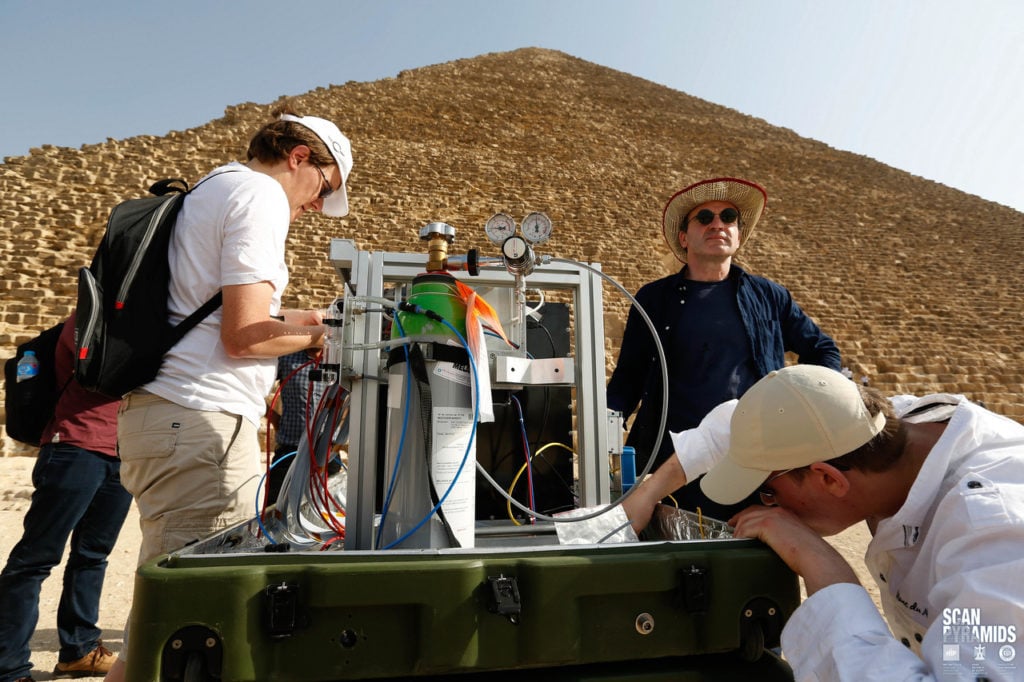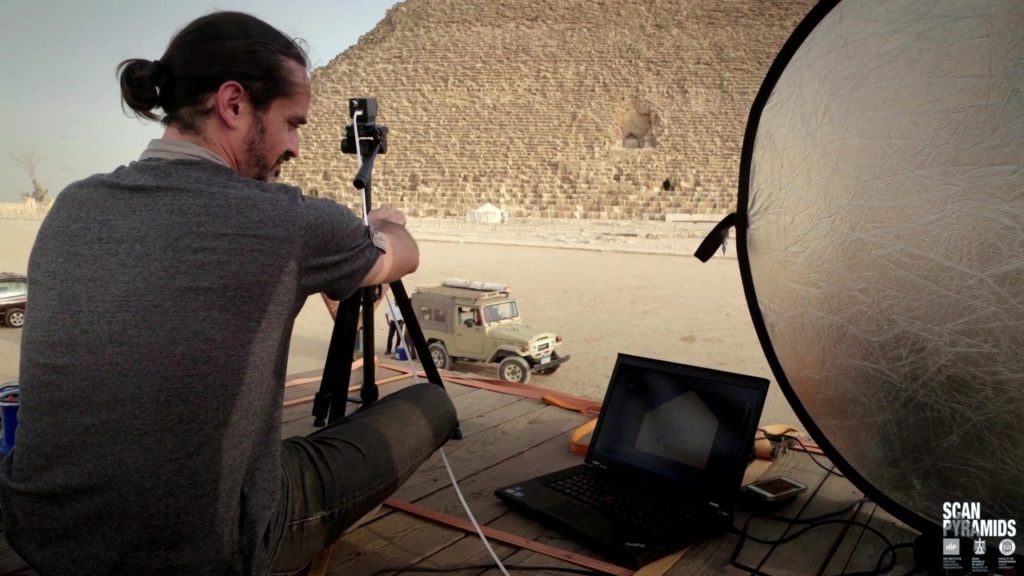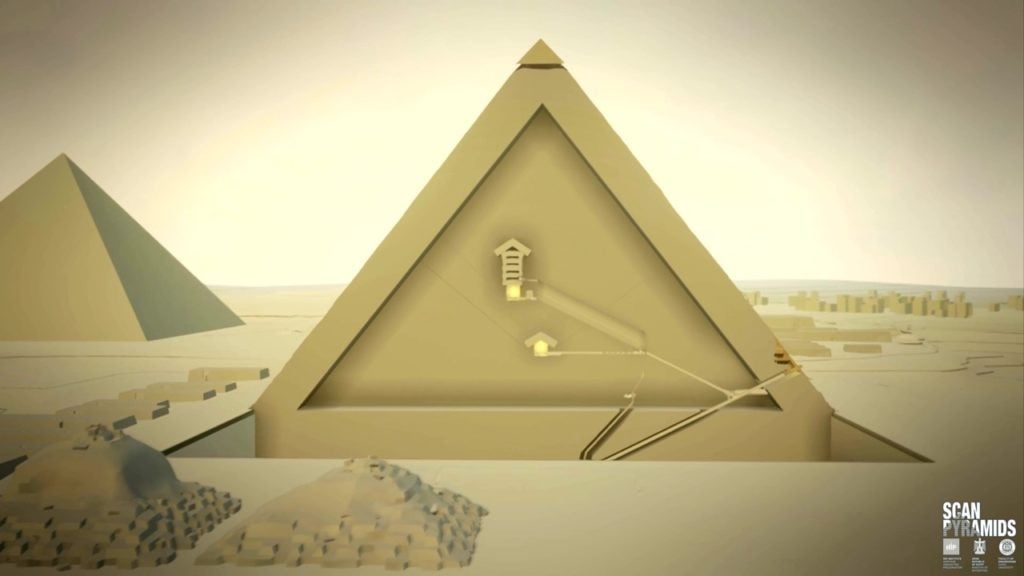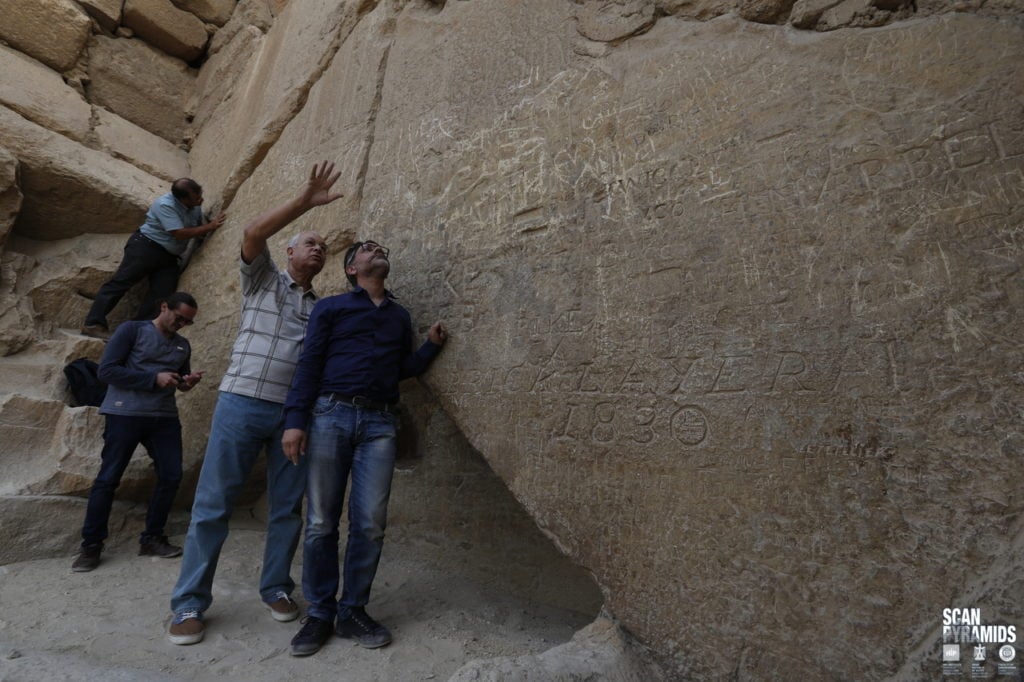Art World
Experts Uncover Secret Rooms in One of Seven Wonders of Ancient World
Scientists are investigating with Muon particles.
Scientists are investigating with Muon particles.
Sarah Cascone

Is the Great Pyramid of Giza hiding secret rooms? New evidence unearthed by researchers suggests that there are two mysterious cavities beneath the surface of the iconic structure, the Egyptian Antiquities Ministry announced.
The pyramids have captivated the world’s imagination for centuries, so it’s no surprise that Operation ScanPyramids was launched a year ago last month in an effort to unlock the secrets of ancient Egypt using non-invasive technology. The group, lead by a team from Cairo University’s Faculty of Engineering and Heritage, Innovation and Preservation, a Paris-based non-profit, now believes it has discovered secret rooms in the Pyramid of Khufu, which, at 480 feet tall, is the largest of the Great Pyramids.
To date, there are three known chambers in the pyramid, which was built as a pharaoh’s tomb 4,500 years ago. It is one of the surviving seven wonders of the ancient world.

CEA Muon telescope setup on Khufu, the Great Pyramid of Giza. Courtesy of ScanPyramids mission.
“We are now able to confirm the existence of a ‘void’ hidden behind the north face, that could have the form of at least one corridor going inside the Great Pyramid,” scientists from Operation ScanPyramids said in a statement. Evidence also points to a separate cavity on the structure’s northeast side, although there is no sign the two potential spaces are linked.
The news follows last year’s bombshell that the fabled tomb of Tutankhamun in the Valley of the Kings may contain a secret second burial chamber. The reigning theory is that Nefertiti was the tomb’s original occupant, and that her remains have laid hidden behind a sealed door in the boy king’s final resting place for millennia.

Infrared 3 x 24 hours survey on Khufu, the Great Pyramid of Giza. Courtesy of ScanPyramids mission.
Operation ScanPyramids is using a variety of non-invasive scientific techniques in its work, combining infrared thermography, 3-D simulation, and muon radiography imaging, which was behind the most recent find.
Also used to study volcanoes, subatomic muon particles travel at close to the speed of light and can penetrate dense stone for hundreds of meters. Scientists monitor their progress through the stone and can “discern cavities (which muons cross with practically no interactions)” based on the particle tracks left behind, according to a statement from ScanPyramids.

Khufu’s internal view of known structures. Courtesy of ScanPyramids mission.
The project is currently investigating the second-largest pyramid in the Giza complex, Khafre, as well as two pyramids in Dashshur, an ancient royal necropolis south of Cairo. Muon scans conducted at Dashur’s Bent Pyramid in May unveiled a previously unknown upper chamber in the structure.
ScanPyramids is conducting additional tests to learn more about the size, nature, and function of the mysterious Khufu cavities, and expects to have a more complete analysis of the data within the first three months of 2017.

ScanPyramids team inspecting the north face of Khufu, where there may be a secret passage. Courtesy of ScanPyramids mission.
At least one expert is skeptical of the latest findings. “I think there are no secret rooms and these anomalies have to do with the way the pyramid was built,” Zahi Hawass, former minister of antiquities, told the Seeker. He is heading a scientific committee that is analyzing the data found by ScanPyramids.
“These people are scientists and do not have an archaeological background. The core of the pyramid was built using long stones and small stones. If you know that, you’ll find anomalies everywhere,” Hawass added.